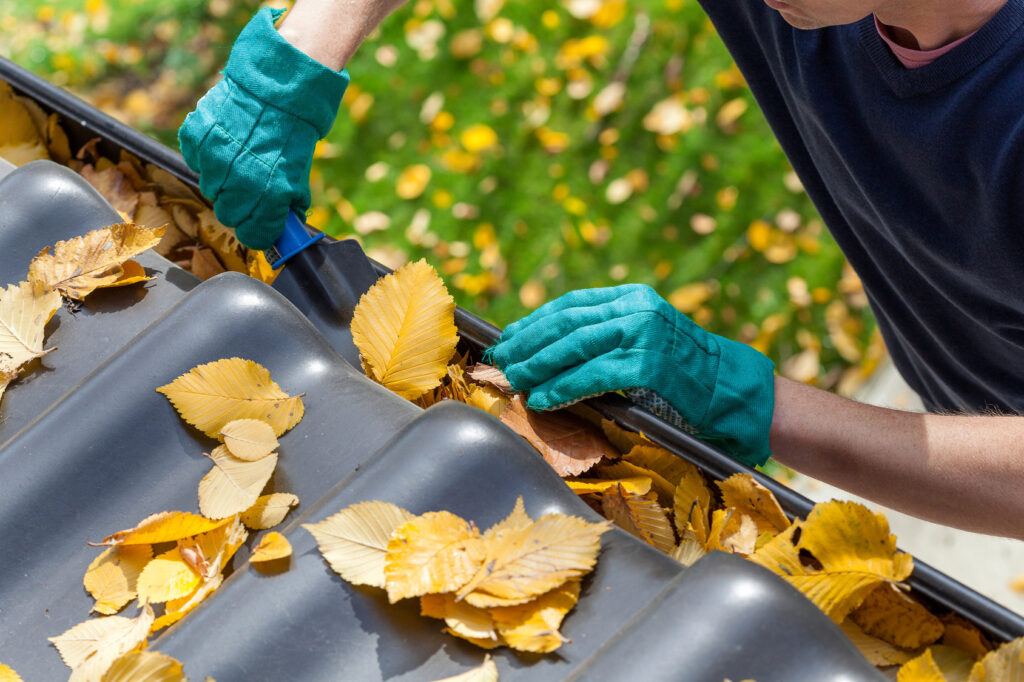Spring Cleaning
April 13, 2016
It’s that time of year again for some Spring maintenance, so we’ve listed some tips that you’ll find helpful for your new home.
Clean Gutters
Clean gutters and downspouts. Look in gutter bottoms for loose granules that signal your asphalt roof may need replacing. Check if there’s any blockage in the downspout gooseneck. Ream it with a garden hose. Take off the nozzle and shove the hose into the downspout to power out of gooseneck bends. Have someone help turn on the water when you’re ready. Make sure the downspouts channel water at least five feet from foundation walls.

Inspect Your Roof
Do a simple visual inspection of your roof. Look for curled and missing shingles, rusted and pitted flashing and cracked caulk around pipe collars, skylights and other roof penetrations. The summer sun can really damage roof shingles. If your roof is relatively flat and you’re confident about working on a roof, do the repairs yourself. If you’re unsure, make sure to call a qualified roofer.
Probe Wood Trim
Use a screwdriver to probe the wood trim around windows, doors, railings and decks. Make repairs now before the spring rains do more damage to the exposed wood.
Reseal and Repair Paint
Leaving wood unpainted and exposed will cause rotting. Pressure wash your home’s exterior and look for any chips in the paint. Keep painted surfaces in good shape by scraping off any chipped and peeling paint and spot painting exposed surfaces. Wood decks, fences, railings, trellises, pergolas and other outdoor structures will last longer and stay in better condition if they’re stained or resealed every year of two.
Check Foundation Vents
A house with a crawl space has vents along the foundation walls. The vents provide air circulation that helps dissipate moisture and prevent mold growth. The vents have screens that keep critters away. The screens usually are recessed and become catch-alls for leaves, twigs and debris. Check these vents and screens for damage. Clean the vents by hand or a shop vacuum. Repair damaged screens knowing that a mouse can squeeze through a hole the size of a pencil’s diameter.
Inspect Concrete
Inspect concrete slabs for signs of cracks or movement. All exterior slabs should drain away from the home’s foundation. Fill cracks with concrete crack filler or silicone caulk. When weather permits, power-wash and then seal the concrete.
Ensure Good Drainage
Check to make sure soil slopes away from foundation walls at least 6 vertical inches over 10 feet. This will move rain and snowmelt far enough away to prevent problems.
Use Compacted Soil
Low areas in the yard or next to the foundation should be filled with compacted soil. Spring rains can cause yard flooding, which can lead to foundation flooding and damage. Also, when water pools in these low areas in summer, it creates a breeding ground for insects.
Check Outside Faucets
To check outside hose faucets for freeze damage, turn the water on and place your thumb or finger over the opening. If you can stop the flow of water, it is likely the pipe inside the home is damaged and will need to be replaced. Also, check the garden hose for dry rot.
Service the A/C Unit
Have a qualified heating and cooling contractor clean and service the outside unit of the air conditioning system. Clean coils operate more efficiently. Change interior filters on a regular basis.
Check Sprinkler and Irrigation Systems
Checking your sprinklers or irrigation systems in the spring can save water and your plants. Run the system through all the zones manually and walk the property. Make sure none of the heads are broken are damaged. Adjust heads so that they are not spraying at the house or streets and sidewalk.
Now, you’re ready to take in all the fresh air and enjoy your new home this Spring.

